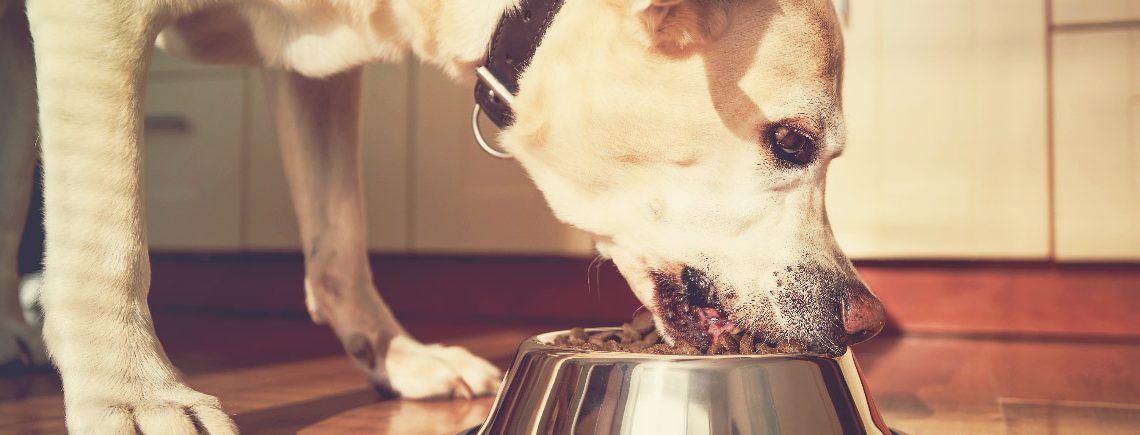Switching Your Dog to Senior Dog Food
As your dog grows older, you will begin to notice some changes in their demeanour. Gray hair may begin to develop, they become less active and may enjoy resting more. One of the key developments in an ageing dog is their diet-with the proper nutrition, you can help your senior canine enjoy their golden years even more.
In this blog post, we will explain the benefits of senior dog food, the differences between a senior formula and an adult formula, and how to know when it’s time to make the switch.
Benefits of Senior Dog Food
A senior dog food may offer several benefits to ageing dogs, including:
- Have a moderated protein content to support age-related muscle wastage
- High fibre content to prevent constipation
- Appropriate caloric balance from fat and protein
- Reduced phosphorus levels to promote good kidney health
- Additional nutrients, like glucosamine and omega-3 fatty acids to support the joints and age-related arthritis
- Vitamin A and linoleic acid to support healthy skin and coat
Your adult dog food will probably have a senior variety that you can consider, but if your dog allergies, a sensitive tummy or skin, a hypoallergenic dog food may be needed.

How is Senior Dog Food Different?
Feeding a formula intended for adult maintenance is suitable for your senior dog; however, your dog may benefit more from a senior dog diet. The main differences that senior dog foods have from those labelled as Adult and Puppy formulas comes down to nutrition composition. On average, senior dog foods have less protein, less fats, and higher carbohydrates than adult and puppy diets.
As dogs begins to age, they may be prone to put on weight due to decreased activity levels, which can be a big detriment to their overall well-being. Obesity can result in arthritis, heart disease, and shorter lifespan. Some senior formulas contain less fat and calories to help manage weight.
When To Switch to a Senior Formula
Dogs are usually considered ‘senior’ around the age of seven, although this can vary depending on their breed. Signs that your dog might be ready to make the switch include:
- Reduced activity levels
- Weight gain
- Reducing mobility
- Smaller appetite
The goal in choosing a the best diet for your senior dog is to provide your dog with the nutritional supports that he needs to enjoy his golden years, and can help reduce the impact of age-related changes to body and lifestyle. Take into consideration their weight, health status, activity levels and age before switching to a new food, and if you have any concerns about your senior dog’s overall health, a visit to your vet is recommended before making any changes.
When you are ready to make the change, our Pet Care Advisors are available to help you choose the best senior food for you dog.

Choosing a Senior Dog Food
Below are our top tips for making the transition to a senior dog food easier for your dog.
-
Use the Senior version of their current food
If your older canine is ready for a senior food, start by taking a look at the senior addition of their current food brand. This can make the transition easier and may also help avoid upset stomachs associated with diet change.
-
Look for a Similar Dog Food
If your dog’s regular food does not offer a senior addition, keep an eye out for senior dog foods with similar ingredient and nutrient profiles. For example, if your dog has always eaten a chicken and rice kibble, look for a senior dry food with similar ingredients.
-
Look for Specialised Foods
Many dog food brands have small and large breed varieties of senior dog food. If you have a small dog, looking for a small breed senior food is a good idea (and the same for larger breeds). These diets are often created with size-specific needs in mind.
Making the Transition
When making the transition to a senior food, it’s important to do it gradually to allow your dog’s tummy time to adjust and will help to prevent tummy upsets. We recommend that any new food is phased in over a week, although you may choose to stretch that to two weeks, depending on your dog.
- Day 1: 75% Old Diet, 25% New Diet
- Day 2: 75% Old Diet, 25% New Diet
- Day 3: 50% Old Diet, 50% New Diet
- Day 4: 50% Old Diet, 50% New Diet
- Day 5: 25% Old Diet, 75% New Diet
- Day 6: 25% Old Diet, 75% New Diet
- Day 7: 100% New Diet
How much should I feed my older dog?
Your dog will probably be used to being fed twice a day, although as they reach their senior years, they may prefer smaller portions more often. Always follow the recommended feeding guide for the brand you are choosing to feed, and use a digital scales to measure portion size for your dog.
As your dog gets older, he may find it harder to reach down to his food and might prefer a slightly raised bowl.
Weight & Body Condition
Monitoring your older dog’s weight and body condition score will help you to know if / when a change in food or activity is required.
A regular weight and BCS check is recommended at least once every three months. By regularly monitoring your dog’s weight you can quickly identify if there is any cause for concern, and allow you to take early action to prevent weight related problems from developing.
Petmania offer FREE in-store weight and body condition score checks for your senior dog and can help you to track his weight and Body Condition Score.


